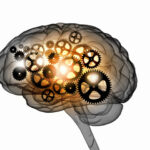
It’s not uncommon to feel “down” or “blue” from time to time. After all, life comes with it’s fair share of ups and downs and, as humans, we’re all along for the ride. Some seasons, however, might make us more prone to feeling blue than others. Known as seasonal depression, seasonal affective disorder (SAD), or “winter blues,” something about the cooler months seems to make many of us more likely to feel depressed than during any other part of the year. While scientists have yet to come up with a definitive reason as to why this might be the case, the most popular theory is that it has to do with the amount of daylight we receive (or lack thereof) during this part of the year when compared to all other seasons.
Understanding Seasonal Depression
Marlynn Wei is a board-certified Harvard and Yale-trained psychiatrist and therapist. Dr. Wei is also a certified yoga instructor and author who frequently writes about the healing powers of yoga, meditation, exercise, and healthy nutrition. According to Dr. Wei, seasonal depression is about more than just being sluggish due to colder weather. She explains that: “Shorter days from early fall through winter can cause even your serotonin to hibernate in your neurons.” In other words, this shorter amount of sunlight exposure can actually affect us on a biochemical level, causing us to feel more tired and less motivated. This decrease in physical activity and increase in desire to sleep can contribute to the depressive symptoms commonly associated with Seasonal Affective Disorder.
Dr. Wei’s research has shown that “You’re more at risk for the winter blues if you’re a woman, younger, live further from the equator, or have family members who have depression or a mood disorder.” Furthermore, she adds that “People with seasonal depression have been found to 5% higher levels of a transporter protein(link is external) that whisks serotonin away from the space in between neurons and moves serotonin back into the presynaptic neuron, which can lead to depression.”
Typically, sunlight during the summer months prevents this from happening, but during winter there is less sunlight which can lead to more serotonin hibernating in the neurons. This, many believe, is what truly causes seasonal depression. However, people with Seasonal Affective Disorder may be more prone to over-producing melatonin during the winter. This hormone is released in response to darkness and is what causes us to feel sleepy.
Benefits of Light Therapy
Phototherapy is a common and fairly effective treatment for individuals struggling with SAD or seasonal depression. Alternatively known as Bright Light Therapy, this form of therapy is usually employed in conjunction with antidepressants, Vitamin D, and traditional psychotherapy for maximum success in afflicted patients. That being said, light therapy is more than just simply standing in front of a box of light or sitting in an illuminated room. In order for the treatment to work, individuals and their practitioners must take care to avoid common mistakes which may cause the treatment to be less effective. Below are a few of them:
1. The Light Box must be 10,000 lux.
According to Dr. Wei, it’s important that the lightboxes employed during this form of therapy closely mimic the full spectrum of sunlight. As such, regular, ordinary lamps are fairly ineffective for this purpose. There are light boxes specially made for Bright Light Therapy or phototherapy that are designed to emit at least 10,000 lux. This is 20 times the strength of your typical indoor lighting. Lamps with fewer lux units would need to be used for longer periods of time to achieve the same benefit.
2. The Light Box Must Provide the Full Spectrum of Bright White Light (Minus the UV Rays)
One of the benefits of using a light box is that you can actually avoid exposure to harmful UV-rays, which is a risk that can come with overexposure to the sun. The light box one uses during phototherapy should filter out 99% of ultraviolet rays which could otherwise cause bodily harm.
3. The Box Should Be at Eye Level or Higher and 2 Feet from the Eyes, at an Angle.
Because the purpose of the light box is to mimic the sunlight it’s important that it’s kept at least eye level or higher. According to Dr. Wei, the ideal distance is also approximately 2 feet away from the eyes. Although, if the light box is weaker than the recommended 10,000 lux then one should seat themselves closer depending on strength to achieve the same effectiveness. Another important tip is to keep the box angled 45 degrees either to the left or right. Dr. Wei advises against putting the box directly in front of the eyes.
4. Use the Light Box Every Morning for 20-60 Minutes Between Fall and Winter.
When using phototherapy, consistency is key in order to see results. Dr. Wei recommends starting out at 20-30 minutes every morning to see if it causes a boost in mood and energy. If this period of time doesn’t seem to make a difference, then she recommends going up to maximum of 60 minutes. Light therapy time can also be used to multitask and go about one’s usual routine. Perhaps have a cup of coffee or check email, if it suits you and doesn’t seem to distract from the desired effects. Using light therapy every morning from early fall to winter can help maximize effectiveness whereas only using it a few times a week for a shorter period of time can make the treatment less effective overall.
Don’t Use if You’re Taking Medications Which Make You Photosensitive
This one might seem obvious but it can be surprisingly easy to overlook. Certain medications can make one photosensitive, meaning that the skin will become more sensitive to light. This can lead to sunburns or rashes with overexposure. Such medications typically include lithium, melatonin, certain antibiotics, and certain acne medications like isotretinoin, more commonly known as Accutane.
6. Monitor Your Mood and Combine With Other Treatments if Necessary
Improved mood and energy should be noticeable within 1 to 2 weeks with regular treatment, however, many people notice a more immediate response. That being said, it’s very important to talk with one’s doctor first to find out if phototherapy is right for you. Otherwise, there is the potential for a negative reaction such as developing excess energy (hypomania) and lacking in sleep as a result. There are worksheets available to track one’s mood during treatment so that it can be easier to keep track of changes. However, if light therapy isn’t enough, this treatment can be combined with other forms of therapy, like cognitive behavioral therapy (CBT), mindfulness, meditation, and exercise.




